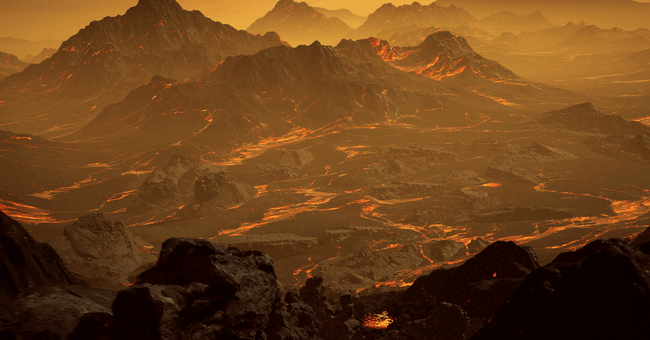In another solar system 26 light-years away from us, there is a red dwarf, a relatively small and cool star, called Gliese 486. Scientists have discovered that around the star rotates a so-called exoplanet - Gliese 486 b. Now the researchers using different methods arrived at what it looks like.
- It is an earth-like planet in that it consists of stone and metal and has the same density as the earth has, says Alexis Brandeker, researcher in astronomy at Stockholm University.
But this planet is much closer to its star than the earth is.
While the earth rotates around its star in one year, it takes the exoplanet only 1.5 days to rotate around its red dwarf.
Thus, it is also very hot on the planet - about 400 degrees Celsius.
Researchers use indirect methods
To find out what this planet looks like, scientists have used two different methods.
One method involves scientists examining the star's brightness and how it changes as the planet passes in front of the star.
- Then you can measure how big it is.
The larger the planet, the more light is obscured, says Alexis Brandeker.
But with that method, one cannot know how heavy the planet is, its mass.
To find out, scientists measure how the planet's gravitational force affects the star.
- The mass of the planet affects how the star moves.
By measuring how the star moves, you can find out the mass of the planet.
This particular planet is 30 percent larger than Earth, but three times as heavy.
Unique conditions for studying atmosphere
The exoplanet also has unique conditions for researchers to be able to study whether the planet has an atmosphere and how habitable the planet is.
- Many planets in our galaxy rotate around just such red dwarf stars.
And one question one is very interested in answering is whether the planets have atmospheres, says Alexis Brandeker.
These red dwarfs are fainter but they are also more active.
This means that they have large eruptions that send out large amounts of radiation to the planets.
Therefore, it is uncertain whether these planets can retain their atmospheres.
"Precisely because this star is so close to the sun, it is one of the closest exoplanets we know of outside the solar system, it is a good candidate to use for future instruments that can measure the atmosphere," says Alexis Brandeker.
For the curious who have access to a telescope, the exoplanet can be seen no matter where on earth you are, according to the researchers.
The study was published in Science.

